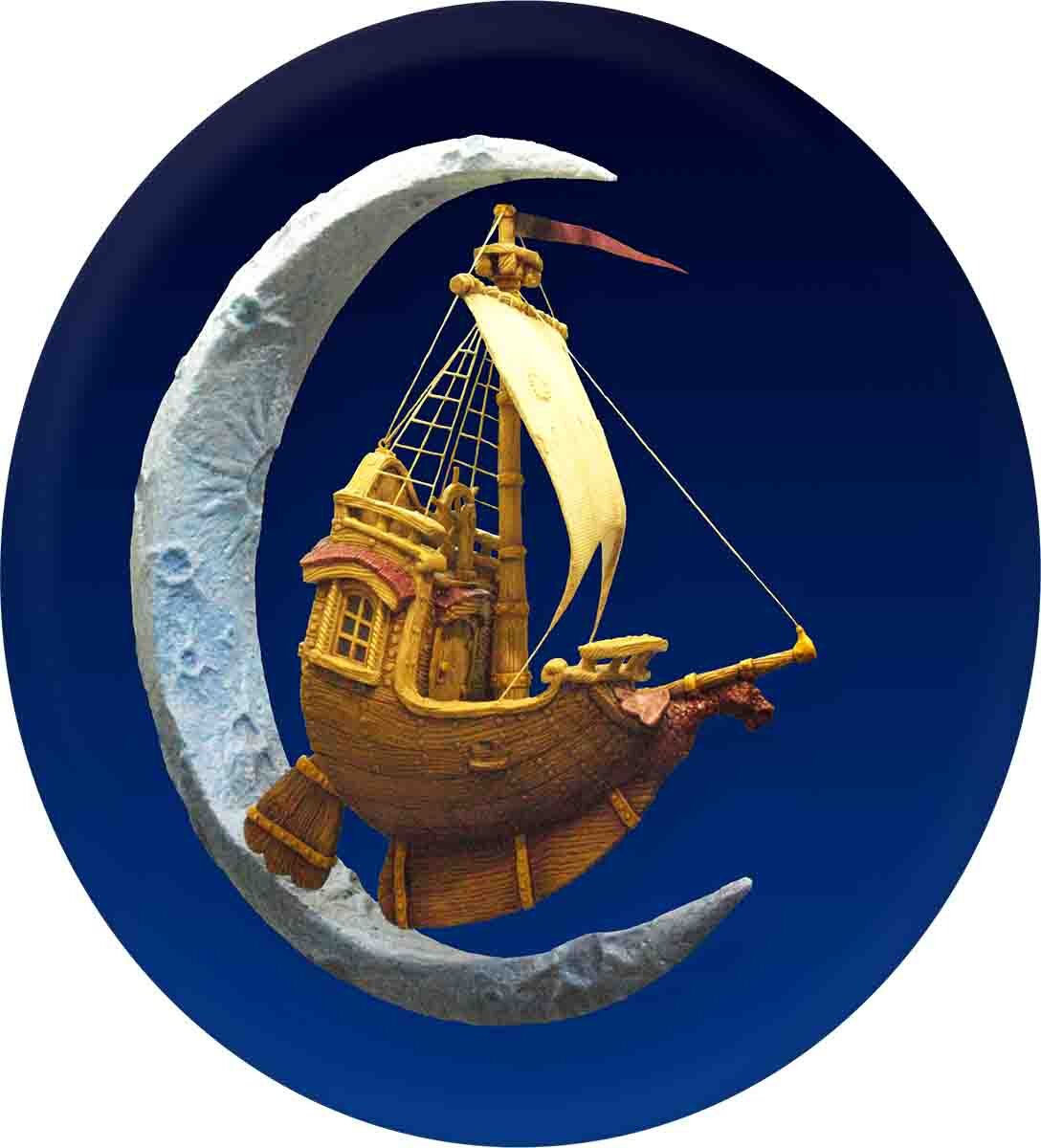EnRoute is capable of so many cool things. This week we will take a look at a feature we call the ‘Rope Trick.’ It is a quick way to create a rope border around a panel.
First you need to create four circles. The scale of the circles does not matter at this point. Then you can line them up by eyeball as shown below. You could use the align tools,’ but this isn't rocket science - it's just a rope.
Now select all four circles and combine the vectors using the ‘weld tool’ to form this shape which looks like the cross section of a four stranded rope.
Next, define your plate we used a 8" x 8" x 1.5" deep plate.
Draw a circle and then use the ‘offset closed contours tool’ to create two inner rings - all spaced 0.5" apart.
Then scale the rope contour to suit the big rings. The rope will be centred on the middle circle.
Next you will create a more ‘mesh. ’ To create the rope mesh, click on the ‘revolve to create surface’ button. Then, from the drop down menu, select the ‘extrude contours’ menu. Choose the ‘mesh function’ which looks like a globe.
Increase the slices and stacks from 12 to 100. Then, set the number of rotations the rope will make as it goes around the circle. Based on our experience, 7 rotations looks good on a circle this size. But you may want to try a few different numbers to see what happens.
Select contours to be extruded (the cross section of the rope). A blue arrow will light up... click it. The prompt will ask you to select the path to follow. This is the center vector circle. Hit the check mark and PRESTO - a rope appears!
Keep in mind that this is a mesh. Meshes cannot be tool pathed until they are made to be part of the reliefs!
(As an aside you will note a third ring in the screenshot below — take a minute to create this ring as well, you will need it later.)
You need a relief to combine the mesh with... so select the inside and outside circle vectors and using the ‘dome tool’ create a donut shaped relief.
In the front or side view move the rope mesh up into position using the up/down keys. Then, select the relief and the rope mesh and opened the ‘add mesh to relief menu.’ It looks like a pyramid (from the top) and will only light when both a relief and mesh are selected. In that menu, select the ‘merge highest’ and ‘smoothing’ (set at medium) commands and hit apply.
It doesn't look like anything happened until you select the mesh alone and delete it. But now the rope is part of the relief.
Now it’s time to use the third circle vector you created earlier. Select it to create the centre dome relief. Make it a 0.3' high base and a 17 degree dome.
Then import a bitmap to add texture to the dome. We used a texture bitmap from our Texture Magic: Classic Collection. Size it to fit the circle, being careful to centre the pattern. Then, select both and use the ‘create bitmap tool’ with a 0.2" height.
Now type the letter 'A' and size and centre it on the dome. Using this vector, create an outline of 0.2" around it. Then, created a flat relief with a height of 0.5" using the letter outline. Now, using the rope centreline vector, modify the relief with the ‘dome relief tool’ set to 17 degrees (to match the angle you used to create the centre dome.
Check the result (you may need to nudge the ‘A’ slightly upward). Next, merge it to the centre dome background using the ‘merge relief tool.’ (Make sure you select the ‘merge highest’ command.)
Everything looks pretty good at this point, but it is a bunch of separate reliefs still. We need to merge everything into a single relief.
Create a zero height relief that is a little bigger than the overall size of the piece. Then opened the ‘merge relief tool’ (it looks like two mountains pushed together), select the base relief and follow the prompts to select the reliefs that need to be merged.
Make sure you ‘merge highest’ or weird things will happen!
Once everything is merged, delete all but the base relief and the letter 'A' vector. Then, select the relief and the 'A' vector and use the ‘add to relief command’ and the ‘bevel relief tool’ to create a beveled 'A'. Give the letter a base of 0.1" (This means the side of the 'A' (before the bevel) is 0.1" tall.)
Now the file is ready to send tool path and send to the router. See you next week!





































